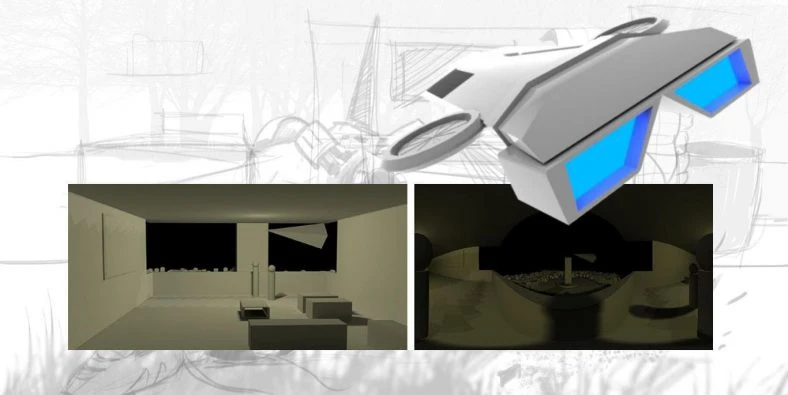Real-Estate VR in Real Estate: VR Case Study

Since last few years, VR has distinctly broken into the very diverse fields and services of our lives. VR is everywhere: games, medicine, automotive, real estate and other industries are influenced by innovative technologies and opportunities, VR provides. Thus, for instance, virtual reality tries to reform the construction industry as well. To discover more, let's explore the following case of our cooperation with one of our customers.
Our client is a construction company, which specializes in building of housing complexes. The company's main challenge was the failure to sell its products quickly and effectively. Moreover, its website sometimes couldn't deal with the flow of users, which led to poor customer engagement and unsatisfactory statistics. Finally, company's software didn't work properly on the latest versions of the devices used. Hence, the client was looking for the proper software (web-site, web and mobile app) which would not only increase productivity and customers' engagement but also would be innovative and up-to-date.
ServReality's team deals with this type of issues by applying innovative and cutting-edge technologies. In a hard competition we won this project. So, firstly, we've discussed the main goals and tasks related to the deal with the client, signed NDA and here we go, the challenge has started. This project's team included:
- three Unity3D developers
- two 3D designers
- one texture artist
- one 3D animator
- one technical artist
- one Project Manager
The duration of the pure development was about 10 months, but the process of pre-development and post-development took another 7 months. Our team constantly reviewed customer's corrections quickly and implemented them in the process immediately to improve the architecture reliability. So we could say, that Agile methodology of development has been applied.
The price of the contract is confidential, but roughly such project would cost about 500-600k USD, depending on the quantity of the apartments. In our case every apartment had its own design and architecture.
The acceptable platforms for this project are the following:
- Oculus -Go, -Rift,
- Steam VR,
- Gear VR.
С++ and C# are the applied programming languages, which were used for Unity 3D and VR.
You can see the result of our cooperation in the videos below. The videos show two rooms, bedrooms, and estate rooms. This is a small piece, which we could show.
One of the ideas of Virtual Reality in the Real Estate Business lies in displaying the customers their future apartments before they have been bought and even built. The apartments buyer can choose any part of the interior, piece of furniture, color, texture and observe (using headsets or even a usual screen), how all components combine and how their apartments would look, change or improve anything or add any detail immediately because VR visualizations are much more detailed and closer to the final output than any other form of visualization. Also, it has the highest level of interactivity.
ServReality aims to make perfect VR products, applying the best of existing algorithms, and satisfying customer's requests and expectations.
To deal with the design problems in VR, ServReality team focuses specifically on:
- Generation of interfaces particularly for displaying 3D.
- Creation of VR experience where the user does not feel confused and disoriented.
- Customers' immersion in VR.
- 3D animation for VR.
- 3D modeling.
- 3D rendering for VR.
In order to overcome the challenges quickly, ServReality provides the following set of solutions for 3D modeling in VR in Real Estate:
- For the comfortable VR experience, it is obligatory to form the ground to avoid motion sickness and to add atmospheric features to make the surrounding area more natural.
- For the customer's immersion, the use of the contextual reticle possibilities is important to orientate the user well. It is also applied for further movements and interaction with things.
- The representation of 3D animation in VR may require the use of a smartphone or VR headset, motion controller and a specialized platform Unity 3D.
- Oculus Go and Rift provide a complete set of tools to model, design, paint and shape objects and textures for 3D modeling. The components of light, layer, grid-snapping, and shades are also included.
- Lightweight Render Pipeline performs rendering of 3D content in VR. It supports high performance of graphics and provides open and flexible rendering by configuring with C#.
In conclusion, ServReality provides perfect service for construction companies and adds some advantages for it, such as:
- Budget savings (working with us, our partner saved up to 40% of their budget (in comparison if they have made everything in-house))
- Growth of sales (by 30% in our case)
- Growth of customers' satisfaction (number of web-site visitors increased by 35%)
- Minimizing of software mistakes, proper work of company's software
- Easy administration
- Time savings for the customers and employees of the company and many others.
And last but not the least, our company would help you to bring your ideas to life quickly through effective collaboration and communication process.
Are you dreaming of anything innovative and progressive? Do you have any questions on how to start VR app development for any field of business?
Feel free to contact us for a professional VR consultation. We are always ready to assist you with your ideas and make your techy dreams come true!

